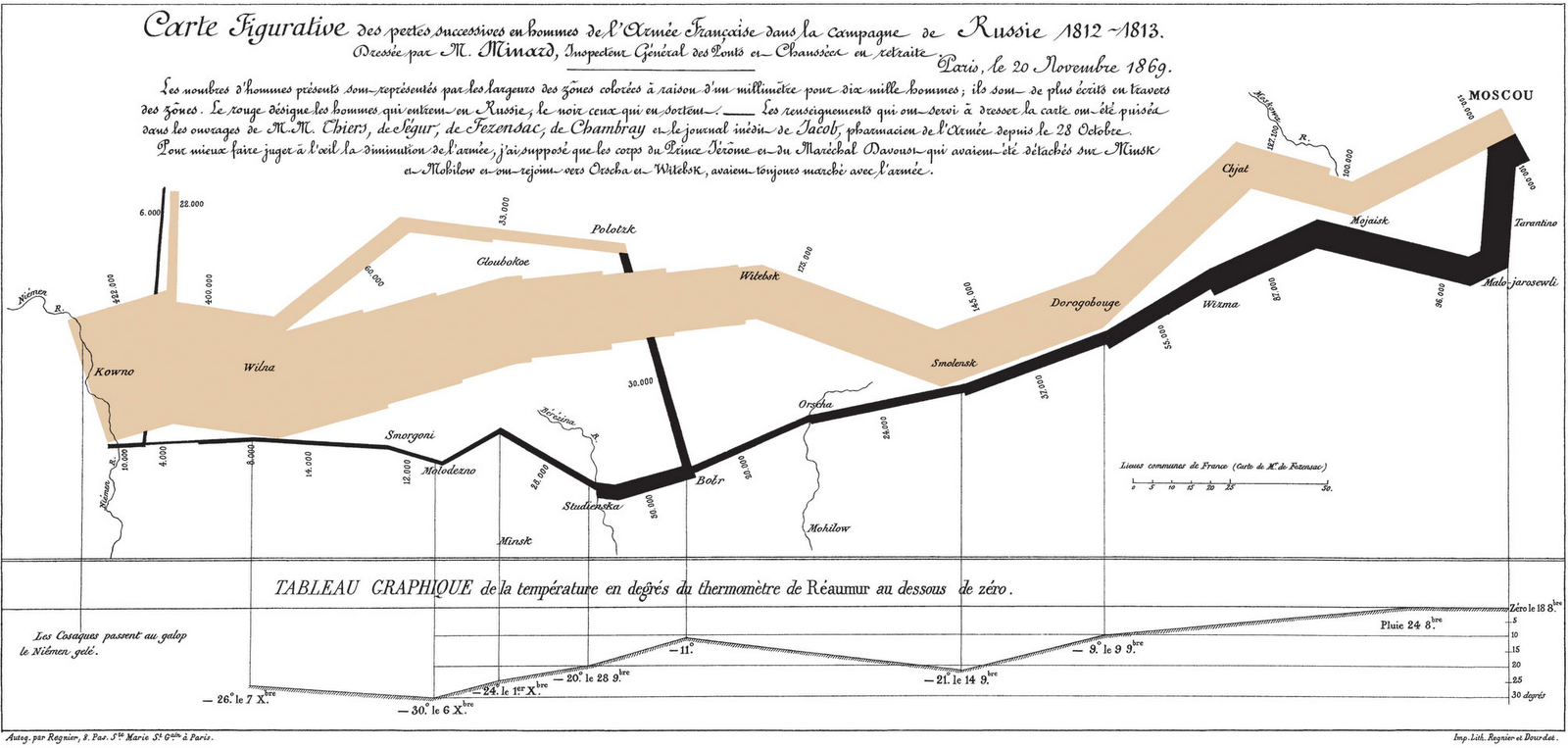I found this remarkable graph/map of Charles Joseph Minard on Cartographia (click map to enlarge), which includes this description:
“Napoleon Bonaparte began his ill-fated 1812 invasion of the Russian Empire with 422,000 men. With each step further into Russian territory, more and more soldiers died or deserted. By the time it reached Moscow, Napoleon’s army had dwindled to 100,000 men–already less than a quarter the size it had been at the start. During their disastrous retreat out of Russia, temperatures plunged to −37.5 °C. Nearly half the remaining survivors of the invasion were killed during the botched crossing of the Berezina River. Of the 422,000 men who set out on the invasion, barely 10,000 of them returned alive.
“All this information is readily visible in the chart above, created by the French civil engineer Charles Joseph Minard, which ingeniously combined both a map of the campaign and a visual representation of the number of men remaining in Napoleon’s doomed army. The thickness of the line is proportional to the number of men in the army (one millimeter equalling 10,000 men), with the beige section representing the offensive toward Moscow, and the black line the retreat. Below, Minard also included a second chart showing the temperature on various days during the retreat (Minard used the Réaumur scale for his temperatures, as was commonplace at the time. Converted to Celsius, this makes the coldest part of the retreat a whopping −37.5 °C).”
Click here to read the entire Cartographia description.
Thanks to my friends Craig, who sparked my interest in Edward Tufte and the visual display of quantitative information, and Ron, who has this map on his office wall. Tufte claims that Minard’s chart is “probably the best statistical graphic ever drawn.”
